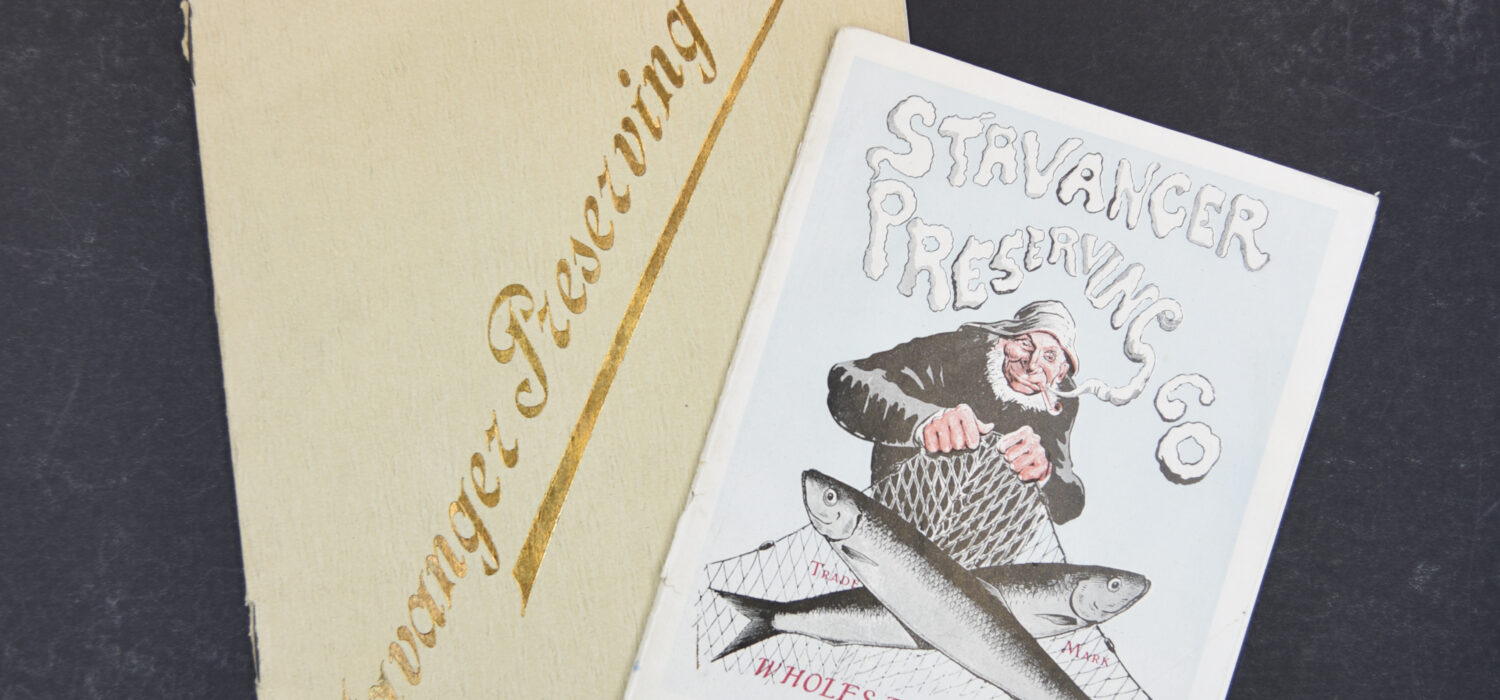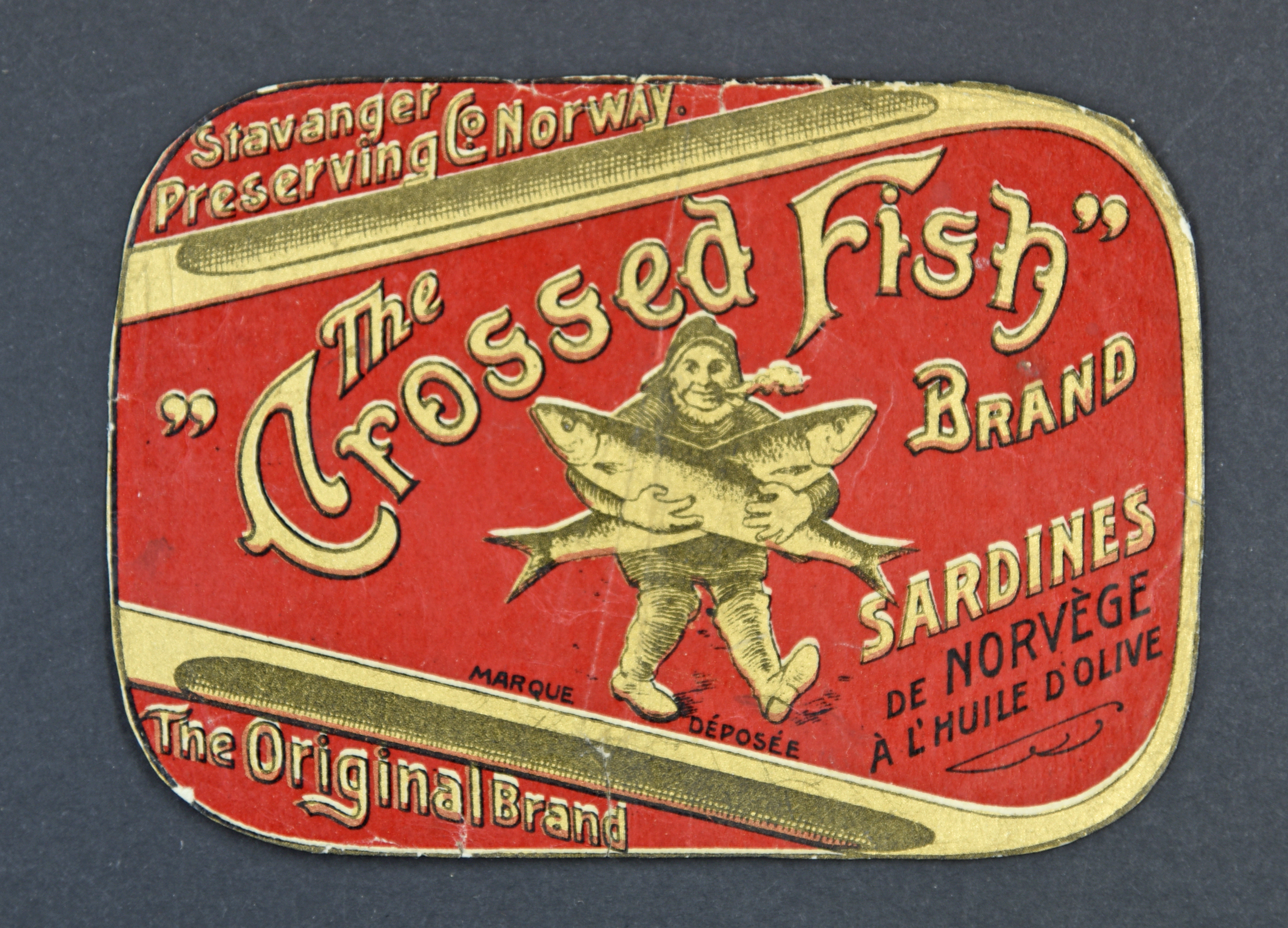The canning producers were pioneers in marketing abroad.
Photo: Fish fork and knife scheme, one of the methods Stavanger Preserving Co. used to reward loyal customers. Photo: John Gunnar Johnsen.
In the article "From personal networks to personalized brands. Marketing in Stavanger Preserving Co. 1879–1914" Bergsagel addresses the fundamental changes in Norwegian advertising that occurred approx. 1900.
Stavanger Preserving Co. introduced smoked Norwegian sardines as a new product in 1879. In the decades that followed, Norwegian sardines became a popular product on the world market. An important reason for the success was the professional and varied marketing.
Initially, the sardines were handled as a food item among many others and sold via personal networks. Eventually, the products were professionally marketed as recognizable, personalized trademarks - one example being "Crossed Fish".
The change occurred as a result of collaboration with the firm's agents internationally, willingness to invest and openness to new ideas. Together with its agents, Stavanger Preserving Co. designed major international advertising campaigns, which consisted of newspaper ads, posters, labels and promotional items. The company built solid brands internationally.
Erik Rønning Bergsagel is a historian which holds a position as advisor and sardine smoker at the Norwegian Canned Museum. He works with both research, collection management and dissemination and has specialized expertise in smoking fish in Wilhagen kammer ovens.
The article is published as peer-reviewed Norwegian Museumstidsskrift 1/2020 and can be read here: https: //www.idunn.no/norsk_mus …
Mainphoto:
Two product catalogs from Stavanger Preserving Co. from 1902 and 1907. Photo: Erik Rønning Bergsagel. MUST / Norwegian canned museum.

 Erik Rønning Bergsagel/Foto:MUST/ Elisabeth Tønnesen
Erik Rønning Bergsagel/Foto:MUST/ Elisabeth Tønnesen